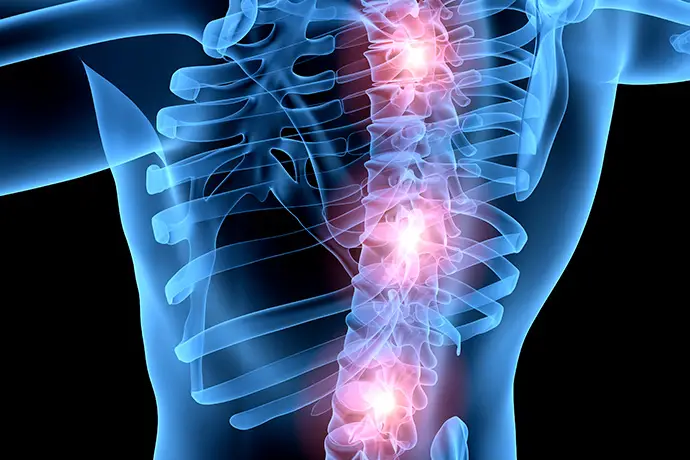A spinal trauma is a fracture that affects this area, specifically one or more vévertebrae what to provokeá one péloss of stability. This willá move the system óseo, applying a certain pressureón in the méspinal game, even reaching the nerve endings of it.
Trauma can produce a péloss of feeling in the arms and/or legs.
The cause of the fracture may be due to an accident (quizá doing sport, in the car, for a caíand…) or by the presence of certain diseases such as cáncer. The Cétumor cells mayístill affect the tissue óseo, causing it to gradually weaken.

An injuryón minor tooécan'títo cause a serious dañof that day méspinal game. For instance, certain conditions cómine a osteoporosis or one rheumatoid arthritis mayíprogressively weaken this area. The spinal canalídeo what's the use cóprotect meón of the médula it will be possibleíto come back very tight, being a normal process that occurs as we age.
These are the main risks that increase the possibility of suffering a trauma to the spine:
- carry out activities fíhigh risk physics.
- Driving or travelingíasses at high speed.
- Diving in shallow waters.
Older people can have trauma from a caígiven when standing up or sitting down. This is produced due to the fact that they present a structure weakened by the passage of time..
Index
¿CóHow can spinal cord trauma be identified??
The diagnosisóstico, and possible treatment, must be carried out by an authorized specialist. take awayá out by means of análisis neurolólogical and later will haveá to be confirmed with neuroimaging tests (cómo through a TAC, a Spine x-ray or one magn resonanceética). Spaghettién may be required to performón of neurophysiological testsócool.
InterventionóNo spinal cord trauma
The goal of an interventionón in this area is relieve the pressureón that has accumulated in the méspinal cord and in the nerve endings of the spinal cord. It is intended that the affected person regain sensitivity and control of their movements, así like urine and feces.
The possibility of ésuccess dependá the speed with which the intervention is carried outón.
By the time the area of nervous tissue has been decompressed, there will beá what to do with stabilizationócolumn no.. For it, applyán grafts óseos with bolts and bars to actáNo. of subjectionón, while the area recovers naturally.
It is important to note that these implants cannot be permanent in any case.; even if the highest quality material on the market has been used, sooner or later finishánot for fail, with the passage of the toños. That is why it is important that you get a good fusión ósea.
Lo más usual is that the goal of surgeryíto solve the problem, But it is not always possible. La interventionón may be aimed at coping with the sísymptoms and reduce pain as muchámaximum possible.
It may be necessary to carry out a new operationóno with the passage of time, both in the same area, cómo at other column levels.
La operationón consists of the extractionón of those tissue fragments óseo what isán exerting pressureón in the area of the méspinal game, or from your nerve endings, tried to get the compressed nerve structures.
I know how to startá to work in the posterior area making an incisionón extensive; this has its reasonón to be, since it must cover both the area in which the fracture has occurred, además of a by of vévertebrae above and below. Así it will be possibleá access the anchor points where it will be placedán the grafts.
Spaghettién you may have to work on the abdomen or chest areaórax, depending on dówhere the problem occurred.
The postoperative
The postoperative period will dependá de la situationóin the patient. When i have concluded, this will haveá to spend a while in the recovery areaón post-anestésica until I return to the roomón. If the trauma is severe, or if the state in which you have exited the operationóIt is not worse than the one that has entered, then enterá to the FIA.
Requireá to be hospitalized between 10-20 días, and requireá of daily care to treat wound care. Receiveá medicinesón, take awayán out changes of postures, control yourselfán the constants and, if everything goes fine, beginán the first rehabilitation exercisesón.
The pain presented in the area of the fracture will decreaseá until prápractically disappear completely. In the event that certain functionalities have been lost cónot the ones already described (that is to say, péloss of mobility or movement, urine and stool control), you needán plenty of time to recover, and it may not be done at all.
Once the patient is discharged, this receiveá some recommendations of the médoctor to make sure you are going to get a good fuseóno of bones:
- tenderá to refrain from smoking.
- tenderá to eat a healthy diet to avoid being overweight.
- Reduce the intake of non-steroidal anti-inflammatory drugs.
¿possible sequels?
There are some risks derived from the interventionón, being práctically the same as facingímasters in any interventionón wantúrgica. It will be possibleíto produce some reactionón is determined byésick, infections, hemorrhages…

The recoveryóNo of the patient to beá conditioned by the presence or not of previous diseases that the patient could have.
mayíthere will still be some complications afteréwith de la operationón. You canímake your situation even worseón, increasing torqueálisis o, even, causing you to lose mobility completely. These situations willán that the patient needs rehabilitationón for months, even for several yearsños. Si la the situationóhas not resulted in a tetraplejia, there is the possibility of recovering some functions through nerve transfers. This will helpá to improve patient conditions.
